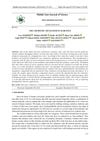TLDR Reducing copper (II) ion levels in hair can decrease hair damage.
The study investigated the oxidative degradation of human hair proteins, focusing on the effects of copper (II) ions, UV exposure, and hair pigmentation. It found that higher levels of copper (II) ions led to increased oxidative modification of hair proteins, regardless of hair pigmentation or UV exposure. Even without UV light, both lightly and darkly pigmented hair showed oxidative damage, which intensified with higher copper (II) ion concentrations. The findings suggested that reducing copper (II) ion levels in hair could mitigate protein oxidation and decrease overall hair damage.
17 citations
,
January 2013 in “International Journal of Cosmetic Science” 29 citations
,
April 2011 in “Journal of Microscopy” The modified osmium method improves hair cortex staining for better visualization.
23 citations
,
May 2010 in “Surface and interface analysis” Chemical treatments and UV radiation severely damage the lipid layer on hair.
 66 citations
,
September 2005 in “Photochemical & photobiological sciences”
66 citations
,
September 2005 in “Photochemical & photobiological sciences” We don't fully understand how sunlight damages different types of hair.
 1 citations
,
December 2022 in “Middle East Journal of Science”
1 citations
,
December 2022 in “Middle East Journal of Science” Permanent hair dyes use chemicals that react with hydrogen peroxide to create color.
 66 citations
,
September 2005 in “Photochemical & photobiological sciences”
66 citations
,
September 2005 in “Photochemical & photobiological sciences” We don't fully understand how sunlight damages different types of hair.
October 2025 in “Bioactive Materials” Combining traditional Chinese medicine with microneedles shows promise for effectively treating skin diseases with fewer side effects.
15 citations
,
January 2017 in “Pigment International” Early hair graying is often inherited and influenced by genetics, environment, and lifestyle, but treatment options are limited.
July 2025 in “Bioactive Materials” New engineering methods show promise for regenerating hair follicles using stem cells and advanced technologies.


